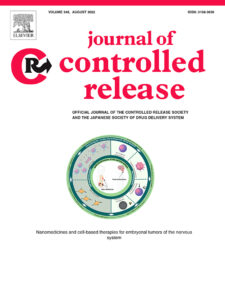October 1, 2022
Cite this
Abstract

Cited by
This article is cited by 7 publications-
Losada-Barreiro, S., Celik, S., Sezgin-Bayindir, Z., Bravo-Fernández, S., & Bravo-Díaz, C. (2024). Carrier Systems for Advanced Drug Delivery: Improving Drug Solubility/Bioavailability and Administration Routes. Pharmaceutics, 16(7), 852. https://doi.org/10.3390/pharmaceutics16070852
-
Shabatina, T. I., Gromova, Y. A., Vernaya, O. I., Soloviev, A. V., Shabatin, A. V., Morosov, Y. N., Astashova, I. V., & Melnikov, M. Y. (2024). Pharmaceutical Nanoparticles Formation and Their Physico-Chemical and Biomedical Properties. Pharmaceuticals (Basel, Switzerland), 17(5), 587. https://doi.org/10.3390/ph17050587
-
Mohammadzadeh, M., Zarei, M., Abbasi, H., Webster, T. J., & Beheshtizadeh, N. (2024). Promoting osteogenesis and bone regeneration employing icariin-loaded nanoplatforms. Journal of biological engineering, 18(1), 29. https://doi.org/10.1186/s13036-024-00425-4
-
Rasoulianboroujeni, M., de Villiers, M. M., & Kwon, G. S. (2023). Entropy-Driven Liquid-Liquid Phase Separation Transition to Polymeric Micelles. The journal of physical chemistry. B, 127(37), 7925–7936. https://doi.org/10.1021/acs.jpcb.3c03854
-
Tiwari, H., Rai, N., Singh, S., Gupta, P., Verma, A., Singh, A. K., Kajal, Salvi, P., Singh, S. K., & Gautam, V. (2023). Recent Advances in Nanomaterials-Based Targeted Drug Delivery for Preclinical Cancer Diagnosis and Therapeutics. Bioengineering (Basel, Switzerland), 10(7), 760. https://doi.org/10.3390/bioengineering10070760
-
Vach Agocsova, S., Culenova, M., Birova, I., Omanikova, L., Moncmanova, B., Danisovic, L., Ziaran, S., Bakos, D., & Alexy, P. (2023). Resorbable Biomaterials Used for 3D Scaffolds in Tissue Engineering: A Review. Materials (Basel, Switzerland), 16(12), 4267. https://doi.org/10.3390/ma16124267
-
Repp, L., Skoczen, S. L., Rasoulianboroujeni, M., Stern, S. T., & Kwon, G. S. (2023). Plasma Stability and Plasma Metabolite Concentration-Time Profiles of Oligo(Lactic Acid)8-Paclitaxel Prodrug Loaded Polymeric Micelles. The AAPS journal, 25(3), 39. https://doi.org/10.1208/s12248-023-00807-4